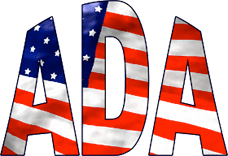
How does one determine which sensory perception areas should be trained?
If the child displays more than one deficiency in the following areas, then these areas of sensory perception should be trained:
- Basic essentials cannot be understood from what is seen
- Visually similar things are not recognized as different
- Distinguishing important information from a multitude of stimuli is unsuccessful
- The ability to filter something out of the background is lacking
- The child must touch/handle everything in order to understand it
- Difficulties with distinguishing between colors and shapes
- Writing and recognition of letters is difficult
- Handwriting is untidy and difficult to read
- Lack of uniformity in the size of the letters
- Uneven reproduction of letters and numbers
- Confusion between letters which are different in placement (d/b, u/n)
- The ability to distinguish between visually similar letters, arithmetical symbols, and numbers (h-k, a-o, 7-4, 6-5) is severely lacking
- Inverted (left to right or right to left) reading or writing of numbers, for example 6 and 9
- Increasingly occurring copy errors
- Difficulties grasping amounts
- Omission of letters or numbers
- Difficulties with quantities over ten
- Difficulties with compound arithmetic problems
- Difficulties with structuring text exercises
- Visual information is not retrained
- Difficulties in recognizing colors, shapes, images, patterns, and objects
- Memorization of word images does not succeed: words are often written properly ten times, then incorrectly again
- Difficulties with drawing patterns from memory
- Transposition of letters a-e-o, h-k, f-t, m-n
- The child cannot find his place in the text when reading
- Frequently checking the pattern while copying
- The writing is angular, curvatures and lengths are different
- The letters a-e-o appear the same
- Visual sequences cannot be perceived properly
- Difficulties with grasping the succession of letters when reading together
- Reversing the sequence of letters when reading and writing
- Letters or syllables are missing, they are transposed or added
- Halting, slow reading
- Assistance articulating, prompting of a given text
- Switching the word order when writing
- Omission of letters, endings or words when writing
- Duplication of letters
- Frequent subsequent additions of missing letters in a word
- Uneven line spacing and spaces of the letters within a word as well as between the words
- Reversal of the sequence of a story (for instance, while writing compositions)
- Distraction by small details and losing the place in the story
- Incorrect sequencing of numbers, omission of digits
- Difficulties counting and counting off
- Difficulties grasping amounts
- Slow learning of basic arithmetic skills
- Omission of intermediate steps when doing arithmetic
- The basics of the sounds heard cannot be grasped
- The ability to distinguish whether sounds are the same or not is severely lacking
- A sound is matched with the wrong letter
- Removing a letter from a word does not work
- Inability to distinguish between or transposition of similarly sounding noises, words or numbers
- Ability to distinguish between vocalized and non-vocalized consonants is severely lacking: g-k, b-p, d-t, s-z, f-v
- Ability to distinguish between dipthongs is severely lacking: ei-eu, eu-au
- Transposition of elongation and sharpening
- Difficulties distinguishing between m and n, for example between 3. and 4. case
- Difficulties repeating the same or similar words
- Difficulties repeating unfamiliar words
- Difficulties transcribing a series of spoken words
- Cannot remember and repeat what was heard
- Frequent questions when reciting
- Omissions or additions of letters, syllables or words
- Failure to complete recitations
- Severe difficulty understanding what was heard
- Errors with b/p, d/t, g/k
- Poor vocabulary, frequent repetitions of words
- Short compositions with poor content
- Prompting of sentences
- Omission of parts of verbally assigned arithmetic problems
- Assistance articulating, prompting of a given text or arithmetic problem
- Acoustical sequences are not perceived correctly
- Muddled explanations, loses the thread easily
- Difficulties with verbally presenting sentences with the correct word order and placed correctly in the thought process
- Difficulties avoiding becoming distracted by minor details when telling a story
- Halting, broken speech with unharmonious breathing
- Spatial perception is not judged correctly
- Ability to judge spatial and temporal measures (distances, amounts, and units) is severely lacking
- Difficulties orienting oneself in an unfamiliar environment
- Memorizing a specified route is tiring
- Building to a pattern or blueprint (building games) is unsuccessful
- Difficulties learning to tell time
- Very slow learning to dress oneself
- Riding a bicycle and swimming are learned much later
- Ability to imitate rhythmic movements is severely lacking
- Problems with singing and movement games
- Ignoring given spatial instructions
- Uneven line spacing
- Cannot arrange the lines properly, writing outside the margins
- Losing the line when reading
- Inverted writing (right to left instead of left to right)
- Transposition of letters when distinguishing their position: b-d, b-p
- Numbers are transposed: 6-9, 36-63
- Difficulties orienting oneself to one’s own body
- Confusion between right-left, above-below, behind-before (in back of-in front of)

How does one determine which sensory perception areas should be trained?
If the child displays more than one deficiency in the following areas, then these areas of sensory perception should be trained:
- Basic essentials cannot be understood from what is seen
- Visually similar things are not recognized as different
- Distinguishing important information from a multitude of stimuli is unsuccessful
- The ability to filter something out of the background is lacking
- The child must touch/handle everything in order to understand it
- Difficulties with distinguishing between colors and shapes
- Writing and recognition of letters is difficult
- Handwriting is untidy and difficult to read
- Lack of uniformity in the size of the letters
- Uneven reproduction of letters and numbers
- Confusion between letters which are different in placement (d/b, u/n)
- The ability to distinguish between visually similar letters, arithmetical symbols, and numbers (h-k, a-o, 7-4, 6-5) is severely lacking
- Inverted (left to right or right to left) reading or writing of numbers, for example 6 and 9
- Increasingly occurring copy errors
- Difficulties grasping amounts
- Omission of letters or numbers
- Difficulties with quantities over ten
- Difficulties with compound arithmetic problems
- Difficulties with structuring text exercises
- Visual information is not retrained
- Difficulties in recognizing colors, shapes, images, patterns, and objects
- Memorization of word images does not succeed: words are often written properly ten times, then incorrectly again
- Difficulties with drawing patterns from memory
- Transposition of letters a-e-o, h-k, f-t, m-n
- The child cannot find his place in the text when reading
- Frequently checking the pattern while copying
- The writing is angular, curvatures and lengths are different
- The letters a-e-o appear the same
- Visual sequences cannot be perceived properly
- Difficulties with grasping the succession of letters when reading together
- Reversing the sequence of letters when reading and writing
- Letters or syllables are missing, they are transposed or added
- Halting, slow reading
- Assistance articulating, prompting of a given text
- Switching the word order when writing
- Omission of letters, endings or words when writing
- Duplication of letters
- Frequent subsequent additions of missing letters in a word
- Uneven line spacing and spaces of the letters within a word as well as between the words
- Reversal of the sequence of a story (for instance, while writing compositions)
- Distraction by small details and losing the place in the story
- Incorrect sequencing of numbers, omission of digits
- Difficulties counting and counting off
- Difficulties grasping amounts
- Slow learning of basic arithmetic skills
- Omission of intermediate steps when doing arithmetic
- The basics of the sounds heard cannot be grasped
- The ability to distinguish whether sounds are the same or not is severely lacking
- A sound is matched with the wrong letter
- Removing a letter from a word does not work
- Inability to distinguish between or transposition of similarly sounding noises, words or numbers
- Ability to distinguish between vocalized and non-vocalized consonants is severely lacking: g-k, b-p, d-t, s-z, f-v
- Ability to distinguish between dipthongs is severely lacking: ei-eu, eu-au
- Transposition of elongation and sharpening
- Difficulties distinguishing between m and n, for example between 3. and 4. case
- Difficulties repeating the same or similar words
- Difficulties repeating unfamiliar words
- Difficulties transcribing a series of spoken words
- Cannot remember and repeat what was heard
- Frequent questions when reciting
- Omissions or additions of letters, syllables or words
- Failure to complete recitations
- Severe difficulty understanding what was heard
- Errors with b/p, d/t, g/k
- Poor vocabulary, frequent repetitions of words
- Short compositions with poor content
- Prompting of sentences
- Omission of parts of verbally assigned arithmetic problems
- Assistance articulating, prompting of a given text or arithmetic problem
- Acoustical sequences are not perceived correctly
- Muddled explanations, loses the thread easily
- Difficulties with verbally presenting sentences with the correct word order and placed correctly in the thought process
- Difficulties avoiding becoming distracted by minor details when telling a story
- Halting, broken speech with unharmonious breathing
- Spatial perception is not judged correctly
- Ability to judge spatial and temporal measures (distances, amounts, and units) is severely lacking
- Difficulties orienting oneself in an unfamiliar environment
- Memorizing a specified route is tiring
- Building to a pattern or blueprint (building games) is unsuccessful
- Difficulties learning to tell time
- Very slow learning to dress oneself
- Riding a bicycle and swimming are learned much later
- Ability to imitate rhythmic movements is severely lacking
- Problems with singing and movement games
- Ignoring given spatial instructions
- Uneven line spacing
- Cannot arrange the lines properly, writing outside the margins
- Losing the line when reading
- Inverted writing (right to left instead of left to right)
- Transposition of letters when distinguishing their position: b-d, b-p
- Numbers are transposed: 6-9, 36-63
- Difficulties orienting oneself to one’s own body
- Confusion between right-left, above-below, behind-before (in back of-in front of)


